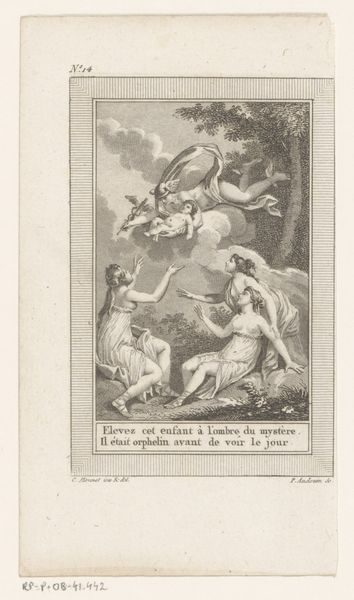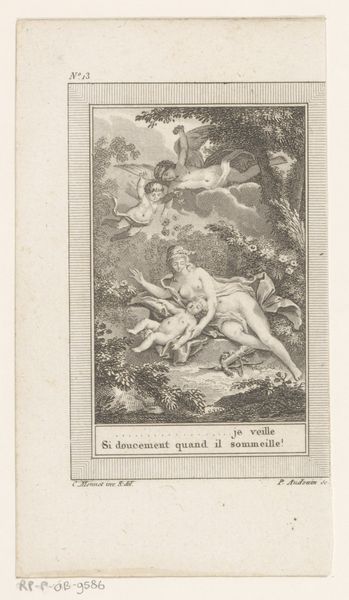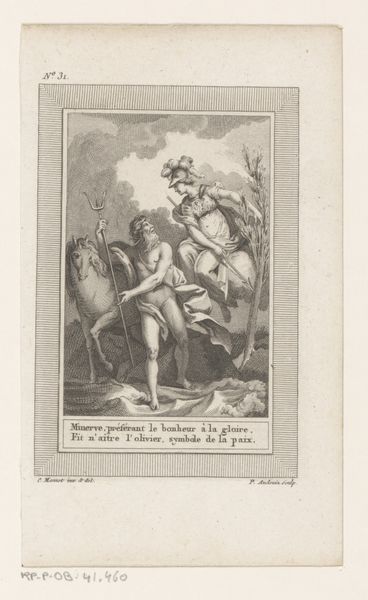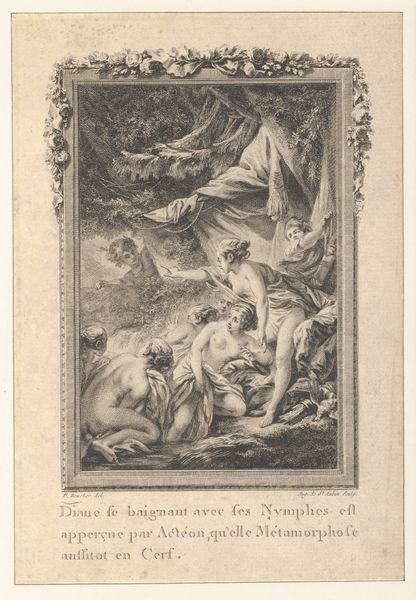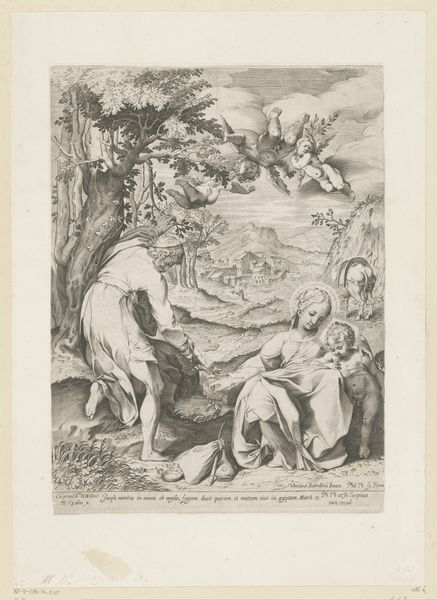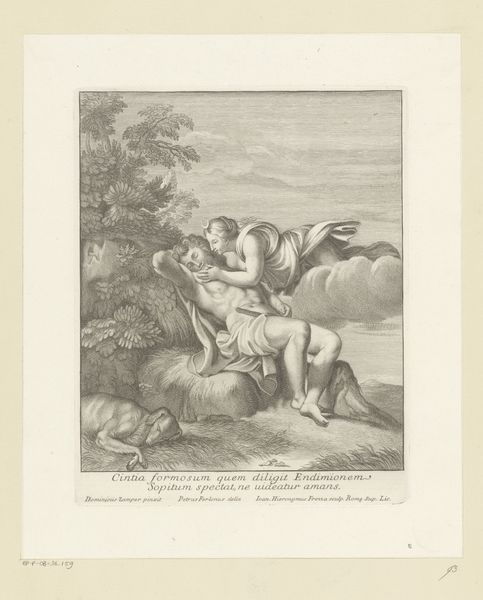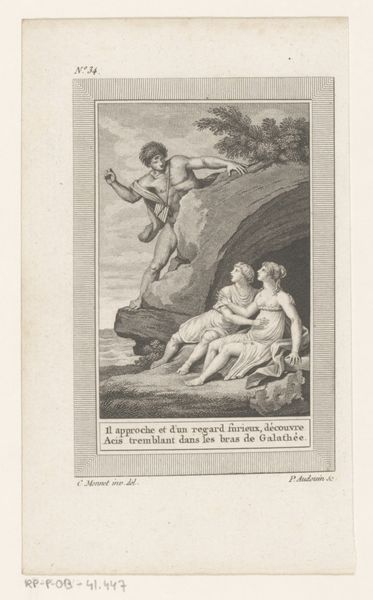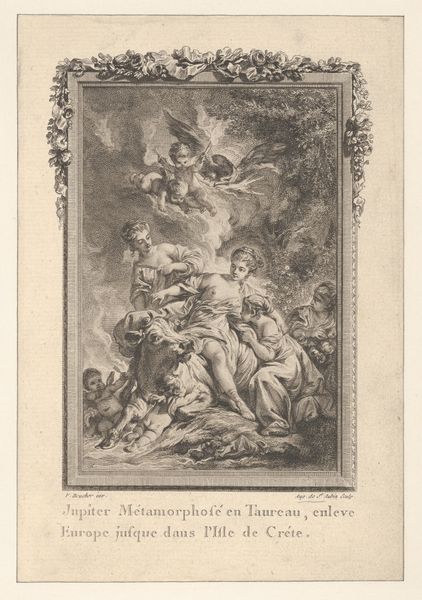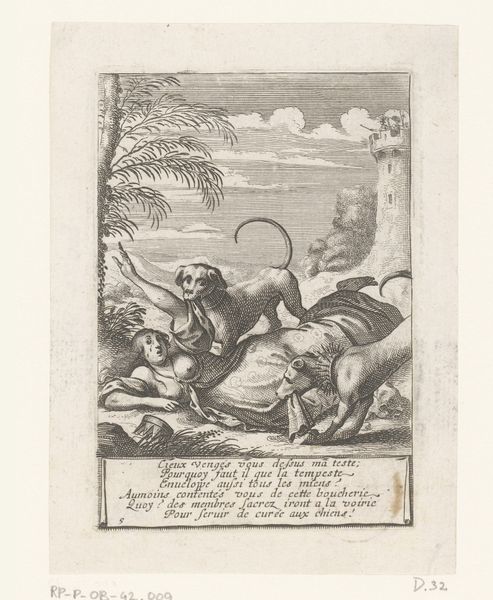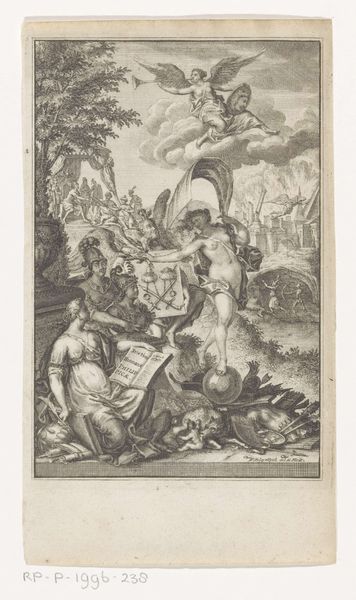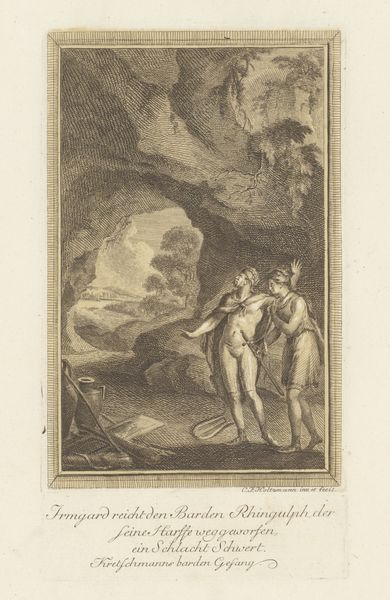
print, engraving
# print
#
old engraving style
#
figuration
#
romanticism
#
line
#
history-painting
#
nude
#
engraving
Dimensions: height 155 mm, width 92 mm
Copyright: Rijks Museum: Open Domain
This print, “Amphitrite wordt ontvoerd door dolfijnen,” was made by Pierre Audouin, sometime between the late 18th and early 19th century. It’s an engraving, meaning the artist would have used a tool called a burin to carve lines into a metal plate, which was then inked and pressed onto paper. The fine lines that define the figures and the landscape, showcase the artist's skill and the labor-intensive nature of this reproductive process. Engravings like this were often made after other artworks, to disseminate images widely. In this case, the subject is a classical myth, rendered in a crisp, graphic style. But the material itself carries cultural significance. The copperplate engraving was a key technology for mass communication, allowing images and information to circulate widely in a way that was previously impossible. So, in a way, this delicate print is a product of an early form of mass media. It reminds us that even seemingly high-art objects are often deeply entwined with the social and economic conditions of their time.
Comments
No comments
Be the first to comment and join the conversation on the ultimate creative platform.
